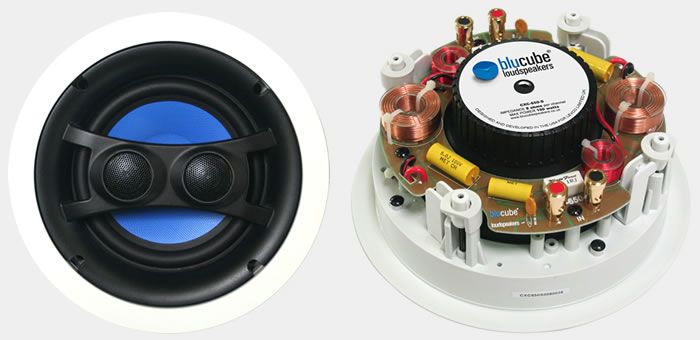I suppose, what I was really asking was whether this two-tweeter speaker sounds any better than a single high quality 'normal' speaker.
I think you're still missing the point. You wouldn't buy two of these to run as a stereo pair (despite that being exactly the mistake that jassdhali made). It's not two tweeters for the left channel and two tweeters for the right channel in place of a single tweeter/woofer conventional stereo pair. So your question whether two tweeters sound better than a single tweeter in a conventional in-ceiling speaker really doesn't make sense.
The top end frequencies remain channel separated. There's the left channel and the right channel. There's one tweeter for each channel. The two tweeters are in close proximity because they have to be housed in the single speaker basket; but they're still acting the same way as two individual speakers for the treble. Bass is omni-directional (in theory). So the bass goes in this speaker from the L & R channels and gets summed to mono because there's one woofer.
I'm afraid I'm not making myself clearly understood.
Yes, I understand that this two-tweeter unit is designed to replace two separate speakers, and I understand that there is no need for two low-frequency units. This is evidenced by the current trend to have separate high-frequency speakers (sometimes several with TV systems) yet only a single sub-woofer.
Yes, I understand that the concept relies on two tweeters in close proximity (necessarily so because they are housed in a single unit), yet providing separate left and right stereo sounds.
My argument is that I doubt whether such a (single, two-tweeter) speaker unit would produce stereo sound because of the lack of separation. Yes, the two (left and right) sounds would still be present, but would emanate from practically the same source. My understanding is that good stereophonic reproduction of sound relies on left and right sound sources being at the points of two angles of an equilateral triangle, the listener being at the third angle.
I have not heard one of these speakers, but I'm certain that what I would hear would not be a convincing spread of sound (of, say, a symphony orchestra) laid out before me, as I would hear from two widely separated speakers. To clarify: the violins might appear to be on my left, the cellos and double basses on my right, and the woodwind in the centre (simplified, of course). With the single (two-tweeter) speaker, all of the instruments would be in the middle!
On those grounds, I was suggesting that, provided both left and right sound signals were present, a single traditional speaker would sound the same as these two-tweeter speakers. The only way to be sure would be to experience each of the two systems in comparison at first hand, of course.


